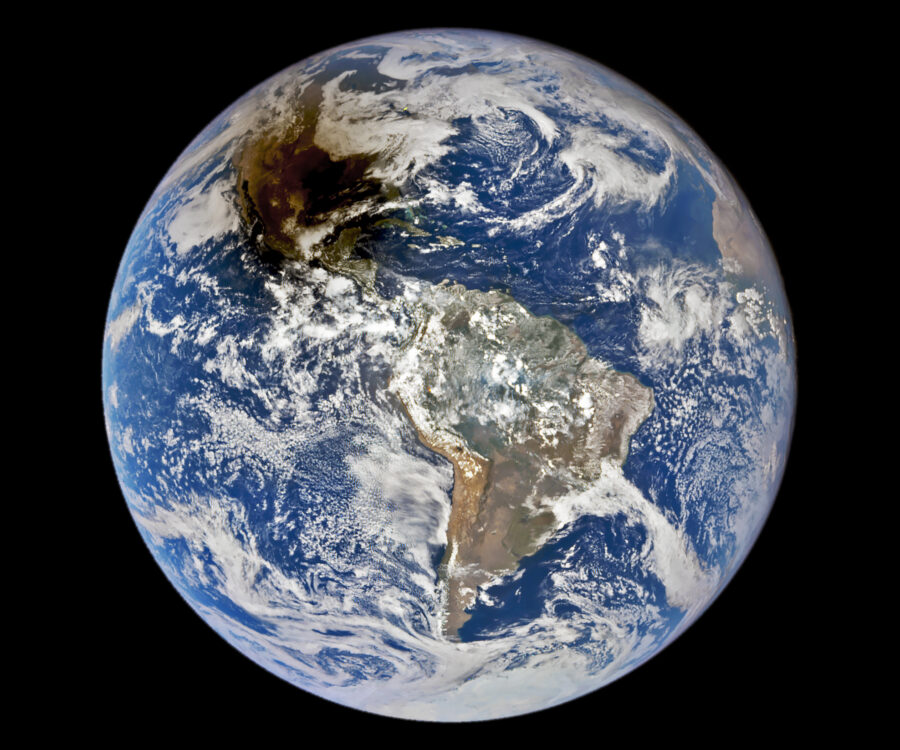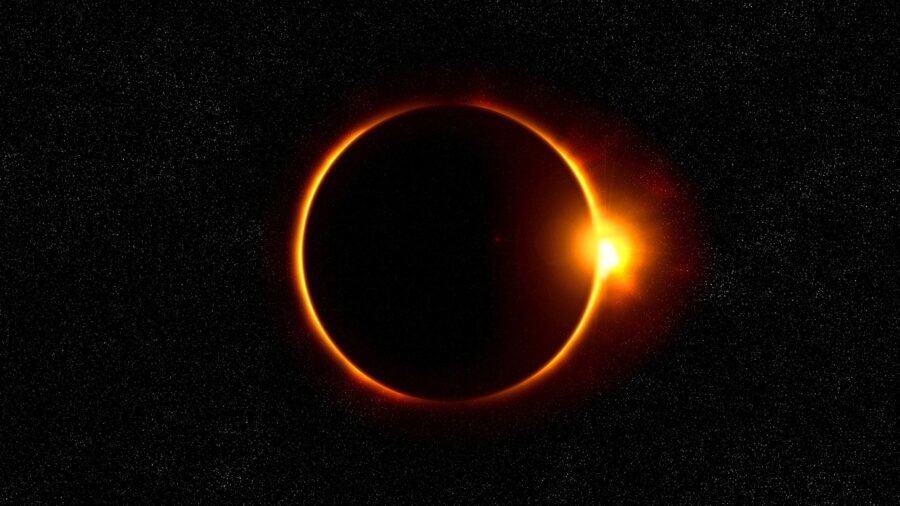Ring Of Fire Eclipse Caught In Unbelievable Photo

Eclipses are usually tied to ominous events; those who saw the 2006 Apocalypto may remember a scene in which a little girl prophesizes that the day will be like night, and the man jaguar will lead the Mayans to their downfall. Fortunately, science has advanced enough for us to know that eclipses aren’t ominous, though they can produce ominously-looking effects in the sky, such as rings of fire. According to Science Alert, this ring of fire was visible to eclipse-gazers across the US when the Moon aligned with the Sun to create an annular eclipse, and you can see a photo of the event from space above.
NASA captured an image of an annular eclipse from outer space, and the viewpoint is absolutely stunning.
What made this particular eclipse interesting is that it didn’t actually produce a short experience of awe-inspiring darkness typically associated with solar eclipses. Instead, the eclipse gazers witnessed an annular eclipse in which the Moon aligned with the Sun but didn’t blot it out completely, resulting in the Sun’s limb still being visible to observers from Earth. They produced a rather interesting effect, which seemed like a reddish-orange ring of fire in the sky where the Sun’s supposed to be.
For such an eclipse to happen and produce the aforementioned ring of fire, the Moon has to be perfectly aligned with the Sun and at the maximum distance from the Earth—a technical term for that distance is “apogee.”
During a total solar eclipse, the Moon completely covers the Sun because it’s relatively close to Earth, and its apparent size is larger than that of the Sun, covering it completely. But things work differently with annular eclipses, precisely due to the Moon’s distance from the Earth.

Since the Moon is now at a greater distance, its apparent size is smaller than that of the Sun, which means that the Sun appears as a very bright ring of fire, or annulus, surrounding the dark disk of the Moon. And while the event seemed very exciting from the ground perspective, it’s also interesting to see what happens from space.
NASA’s Deep Space Climate Observatory (DSCOVR) took images of the shadow produced by the eclipse as it swept across the US. DSCOVR used the Earth Polychromatic Imaging Camera, which is usually used to capture global views of our planet, to capture the images.
The eclipse gazers witnessed an annular eclipse in which the Moon aligned with the Sun but didn’t blot it out completely, resulting in the Sun’s limb still being visible to observers from Earth.
While the ground view provided interesting visuals of a ring of fire in the day sky, the eclipse produced a pretty big shadow that was visible along a rather wide path, stretching from Oregon in the Pacific Northwest to Texas in the South.
The darkest part of the shadow called the centerline, was where observers from Earth saw a ring of fire around the Moon. Observers outside the centerline had a much less exciting view of the eclipse, which was a partial eclipse.
According to Space and Time and Date, the ring of fire eclipse was the penultimate eclipse for 2023; next up is the partial Lunar Eclipse happening on October 28-29, after which we won’t witness another eclipse until March 24-25, 2024, which will be visible from North America. However, it might not produce as interesting effects as the annular Solar Eclipse.












